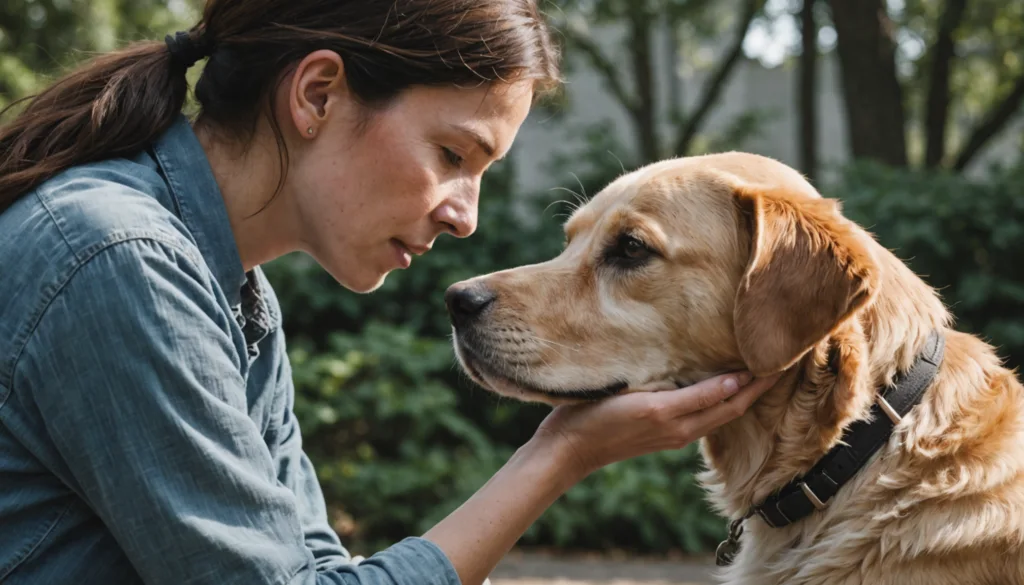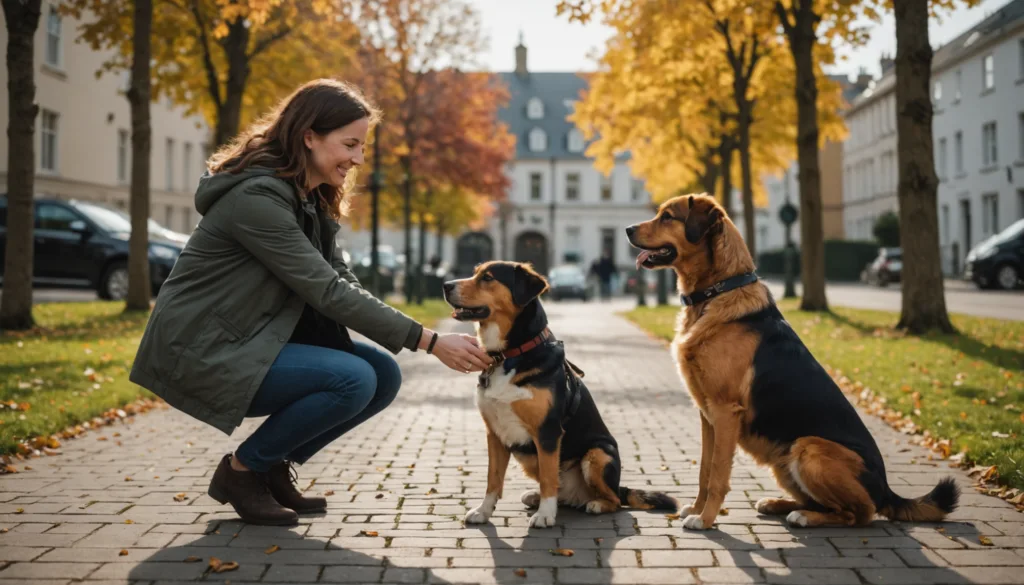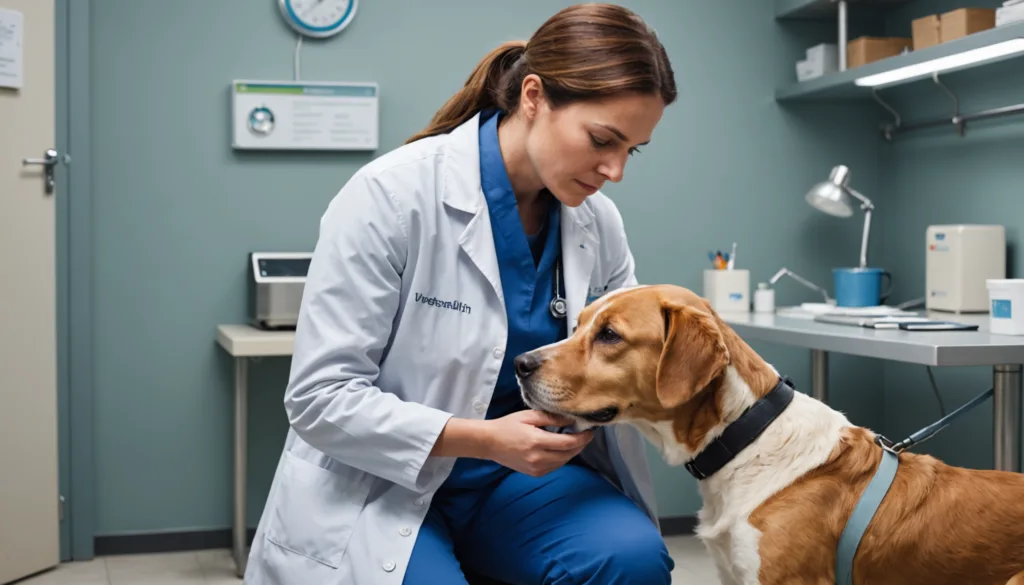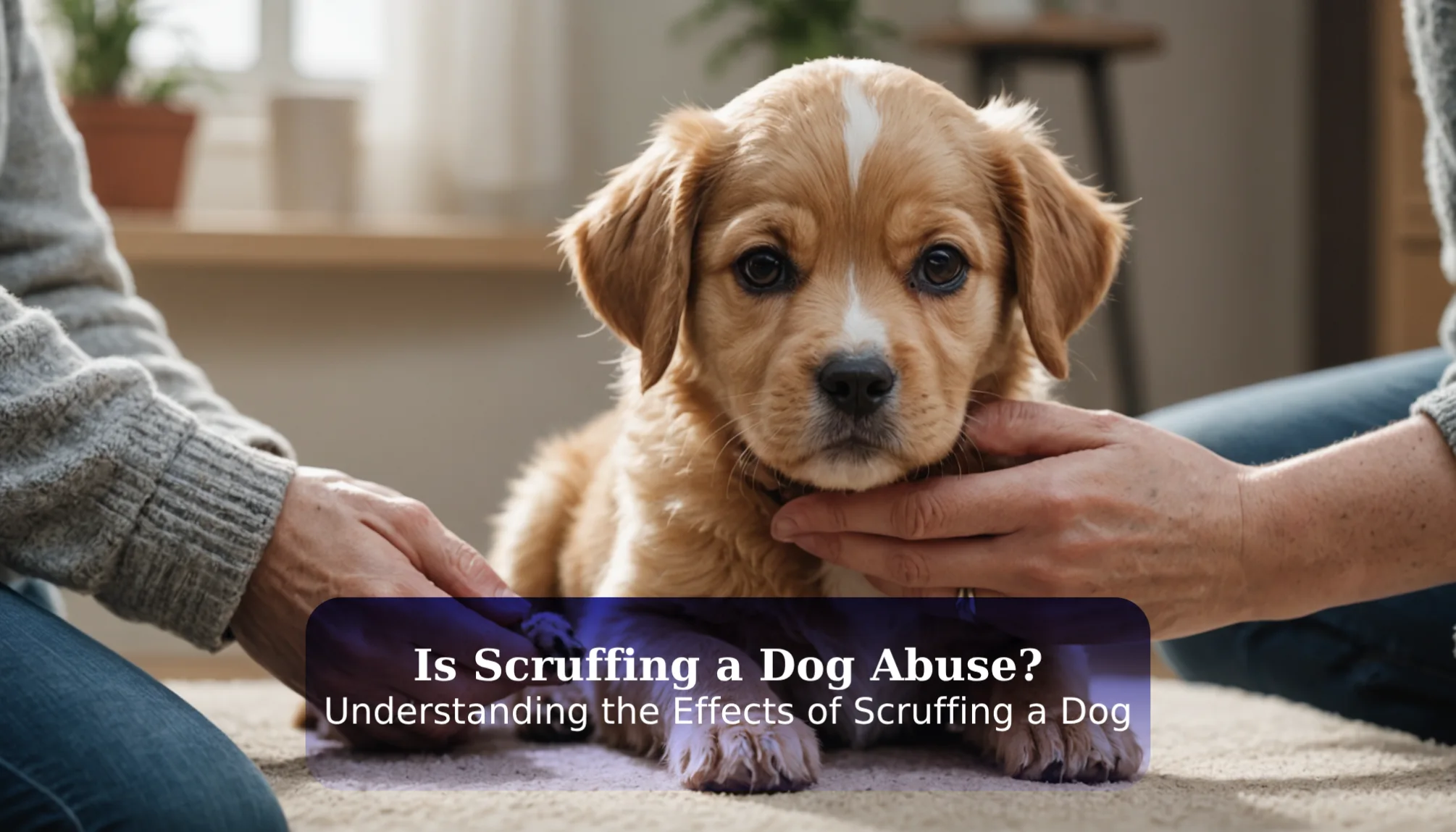Have you ever seen someone grab a dog by the scruff of its neck? The question of is scruffing a dog abuse can spark heated debates among dog owners and pet lovers alike. Understanding how this common practice affects our furry friends is crucial for building a trusting relationship with them. If not approached with care, scruffing can lead to fear and stress, potentially causing long-term behavioral issues in dogs.
In this article, we’ll dive into the topic of scruffing, including what happens when we hold dogs this way and how they perceive it. We’ll also explore whether scruffing crosses the line into abusive behavior and share better alternatives for training that promote positive reinforcement. So, let’s fetch some knowledge and ensure we are kind and compassionate guardians for our pups!
Understanding Scruffing a Dog and Its Potential Effects

What Happens When You Hold a Dog by the Scruff?
When a dog is scruffed, the loose skin on the back of their neck is grasped firmly. Some dogs freeze or go limp when scruffed, while others may show signs of distress. The reaction varies greatly between individual dogs. Small puppies often display a natural reflex to go still, while adult dogs typically lose this reflex. (Dogids, GoodRx)
Adult dogs respond very differently. Their bodies don’t react like puppies do, and scruffing can cause discomfort rather than a calming effect. Many adult dogs struggle, yelp, or show distress when scruffed, which creates stress and damages the trust between dog and owner.
The Difference Between Maternal Scruffing and Human Scruffing
Mother dogs carry puppies by the scruff for transportation and safety. During maternal scruffing, special hormones help puppies remain calm and still. This natural process works perfectly for young puppies who need maternal transport. (Pet4Homes)
Human scruffing differs significantly from maternal handling. People lack the instinctual precision mother dogs possess; human hands don’t match a dog’s mouth shape, often resulting in improper grip or pressure. Additionally, dogs can distinguish between their mother and a human handler.
As dogs mature, they outgrow the calming response they had as puppies. Their skin becomes less elastic, and their weight increases beyond what the scruff can safely support. When humans attempt to scruff an adult dog, confusion often results because of the differences in context and technique.
How Dogs Perceive and Respond to Scruffing as a Form of Discipline
Dogs don’t naturally understand scruffing as punishment. When used as discipline, scruffing typically confuses or scares dogs rather than teaching them. Dogs learn through clear, consistent feedback.
When scruffed, most dogs show stress signs such as:
- Showing whites of eyes
- Licking lips
- Pinning ears back
- Stiffening body
- Whining or yelping
These signs indicate that the dog feels threatened, not corrected. Dogs connect the scruffing with the person doing it rather than with any bad behavior, which harms the bond between dog and owner.
Is Scruffing a Dog Considered Abuse?

Veterinary Perspectives on Whether It’s Okay to Scruff a Dog
Most veterinary professionals advise against routine scruffing. The American Animal Hospital Association promotes gentle handling methods that avoid stress for animals. The veterinary community generally agrees that:
- Scruffing isn’t recommended as a training tool.
- Better handling methods exist that cause less stress.
- Brief, gentle scruffing might be needed in rare medical situations.
- Force should be minimized in all dog handling.
References:
When Scruffing May Cross into Harmful Behavior
Scruffing becomes potentially harmful when it causes physical pain or psychological distress. Signs that scruffing has crossed this line include:
- The dog yelps, cries, or shows pain signals.
- Lifting the dog off the ground by the scruff.
- Continuing to scruff despite fear responses.
- New behavior problems developing after scruffing.
- Visible marks on the skin or physical injury.
Psychological Impact of Scruffing on Dog Behavior and Trust
Studies show that scruffing and other aversive training methods can negatively affect a dog’s mental health. Regular scruffing can lead to:
- Fear of human hands, especially near the head.
- Avoidance when people reach toward them.
- Increased stress during training.
- Breakdown of the human-dog bond.
- Defensive aggression.
Research indicates that dogs trained with aversive methods display more stress behaviors than those trained with positive methods.
Common Scenarios Where People Scruff a Dog

Scruffing a Puppy: Is It Different Than Scruffing Adult Dogs?
Many people assume scruffing puppies is natural because mother dogs do it. While puppies have looser neck skin and a natural response to go still when scruffed, human scruffing still differs greatly from maternal handling.
Even with puppies, important factors include:
- Their skin is more delicate.
- Early handling shapes future behavior.
- Negative experiences have stronger impacts.
- Building trust is crucial during this stage.
Better ways to handle puppies include supporting their chest and hindquarters instead of scruffing them.
Using the Scruff to Discipline a Dog: Effectiveness and Concerns
Some dog owners use scruffing to stop unwanted behaviors like jumping, nipping, or excessive barking. Research shows this approach has significant drawbacks since dogs typically don’t connect the scruffing with the specific behavior being corrected.
Problems with scruffing as discipline include:
- Dogs may temporarily stop the behavior but resume it later.
- They often develop fear of the handler rather than learning rules.
- Some dogs become more aggressive when scruffed.
- It damages trust needed for effective training.
When Veterinarians Might Need to Scruff a Dog
In limited medical situations, veterinarians might briefly use a modified scruff hold. Situations where veterinary scruffing might occur include:
- Administering an injection when other restraint methods have failed.
- Preventing a bite during a painful procedure.
- Quickly removing something dangerous from a dog’s mouth.
Many veterinary clinics now implement “Fear Free” techniques that minimize forceful restraint.
Alternative Methods to Scruffing for Dog Training

Effective Discipline Techniques That Don’t Involve Scruffing
Positive reinforcement works by rewarding desired behaviors instead of punishing mistakes. This might mean giving a treat when a dog sits calmly or praising them for coming when called.
Other effective techniques include:
- Redirection: Offering an appropriate toy when a dog chews something forbidden.
- Management: Using baby gates or leashes to prevent unwanted behaviors before they start.
- Ignoring: Calmly turning away when a dog jumps up.
These methods teach rather than frighten the dog.
Positive Reinforcement Approaches to Manage Aggression
Even for serious behavior issues like aggression, positive methods prove more effective than punishment. Effective approaches for managing aggression include:
- Counter-conditioning: Changing how a dog feels about a trigger by pairing it with positive experiences.
- Desensitization: Gradually exposing the dog to triggers at a level they can handle.
These methods address underlying emotions driving aggression rather than just suppressing symptoms through fear.
How to Lift or Handle Your Dog Safely Without Scruffing
Safe handling builds trust and keeps both dogs and handlers comfortable. Here are better alternatives to scruffing:
For small dogs:
- Place one hand under the chest and support the hindquarters with your other hand.
For medium to large dogs:
- Squat beside the dog and place one arm around the front of the chest and another around the hindquarters.
For controlling a dog without scruffing:
- Use properly fitted harnesses with front and back attachment points.
Expert Insight on Scruffing and Modern Dog Training

Current Research on How Scruffing Affects Different Dog Breeds
Research and professional expertise offer clear guidance on how scruffing affects dogs and what alternatives work best. Studies show that dog breeds respond differently to handling methods, including scruffing.
How Professional Trainers Address Discipline Without Scruffing
Modern trainers focus on understanding dog behavior function to address discipline effectively. Rather than forcing compliance, they build motivation for cooperation.
Understanding the Root Causes of Behaviors That Prompt Owners to Scruff
Many behaviors that lead owners to use scruffing have underlying causes that can be addressed more effectively without physical corrections.
Common dog’s behaviors that lead to scruffing include jumping up or chewing furniture due to excitement or boredom rather than disobedience. By understanding these root causes, owners can choose effective solutions that build trust rather than resorting to scruffing out of frustration.
FAQs
1. Is scruffing a dog ever appropriate?
In rare emergencies where immediate control prevents injury, a brief gentle hold might be necessary, but better restraint methods usually exist. It’s crucial for dog owners to consider the dog’s body language and emotional state, as more humane training techniques can be employed to manage behavior without stress.
2. Does scruffing hurt dogs?
Yes, especially adult dogs whose necks may not tolerate this handling method well. Using scruffing can cause pain and stress, making it a controversial topic among dog owners and trainers who emphasize more positive reinforcement training methods.
3. Why do mother dogs scruff their puppies?
Mother dogs use this technique for safe transport during early development; it’s not meant for discipline. This method is often used to steer puppies in a safe direction, ensuring their good behavior while they learn important skills from their mother.
4. What should I do instead of scruffing when my dog misbehaves?
Focus on positive reinforcement techniques such as redirection and rewards for desired behaviors. By using commands and rewarding good behavior, you can encourage your dog to respond positively without the need to restrain a dog physically.
5. Can scruffing make behavior problems worse?
Yes, it often increases fear and anxiety in dogs, leading to more behavioral issues over time. This method can have unintended consequences, as it may reinforce negative associations and stress, which can even be dangerous for the dog’s overall well-being.

